John Farrell in Commonweal:
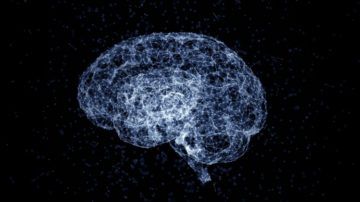 In the view of many scientists, Artificial Intelligence (AI) isn’t living up to the hype of its proponents. We don’t yet have safe driverless cars—and we’re not likely to in the near future. Nor are robots about to take on all our domestic drudgery so that we can devote more time to leisure. On the brighter side, robots are also not about to take over the world and turn humans into slaves the way they do in the movies.
In the view of many scientists, Artificial Intelligence (AI) isn’t living up to the hype of its proponents. We don’t yet have safe driverless cars—and we’re not likely to in the near future. Nor are robots about to take on all our domestic drudgery so that we can devote more time to leisure. On the brighter side, robots are also not about to take over the world and turn humans into slaves the way they do in the movies.
Nevertheless, there is real cause for concern about the impact AI is already having on us. As Gary Marcus and Ernest Davis write in their book, Rebooting AI: Building Artificial Intelligence We Can Trust, “the AI we have now simply can’t be trusted.” In their view, the more authority we prematurely turn over to current machine systems, the more worried we should be. “Some glitches are mild, like an Alexa that randomly giggles (or wakes you in the middle of the night, as happened to one of us), or an iPhone that autocorrects what was meant as ‘Happy Birthday, dear Theodore’ into ‘Happy Birthday, dead Theodore,’” they write. “But others—like algorithms that promote fake news or bias against job applicants—can be serious problems.”
Marcus and Davis cite a report by the AI Now Institute detailing AI problems in many different domains, including Medicaid-eligibility determination, jail-term sentencing, and teacher evaluations:
Flash crashes on Wall Street have caused temporary stock market drops, and there have been frightening privacy invasions (like the time an Alexa recorded a conversation and inadvertently sent it to a random person on the owner’s contact list); and multiple automobile crashes, some fatal. We wouldn’t be surprised to see a major AI-driven malfunction in an electrical grid. If this occurs in the heat of summer or the dead of winter, a large number of people could die.
The computer scientist Jaron Lanier has cited the darker aspects of AI as it has been exploited by social-media giants like Facebook and Google, where he used to work. In Lanier’s view, AI-driven social-media platforms promote factionalism and division among users, as starkly demonstrated in the 2016 and 2020 elections, when Russian hackers created fake social-media accounts to drive American voters toward Donald Trump. As Lanier writes in his book, Ten Arguments for Deleting Your Social Media Accounts Right Now, AI-driven social media are designed to commandeer the user’s attention and invade her privacy, to overwhelm her with content that has not been fact-checked or vetted. In fact, Lanier concludes, it is designed to “turn people into assholes.”
More here.
 The story of the placebo effect used to be simple: When people don’t know they are taking sugar pills or think they might be a real treatment, the pills can work. It’s a foundational idea in medicine and in clinical drug trials dating back to the 1950s.
The story of the placebo effect used to be simple: When people don’t know they are taking sugar pills or think they might be a real treatment, the pills can work. It’s a foundational idea in medicine and in clinical drug trials dating back to the 1950s.
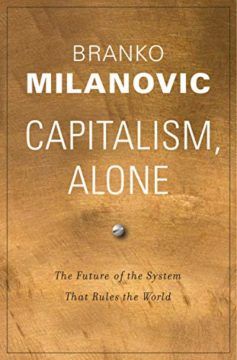 The economist Branko Milanovic has been a central participant in the debates of this emerging field, as well as one of its most idiosyncratic contributors. Born in Belgrade when it was part of Yugoslavia, Milanovic wrote his dissertation on income inequality in his home country long before it was a fashionable topic. He went on to research income inequality as an economist at the World Bank for nearly two decades before taking up a string of academic appointments; he currently teaches at the Graduate Center of the City University of New York. But he is not your typical World Bank economist: Milanovic knows his Marx and, though not a Marxist himself, has long insisted on the value of class analysis and historical perspectives to economics, while also dabbling in political-philosophy debates about distributive justice. His experience of life under actually existing socialism, meanwhile, gave him critical distance from the end-of-history narratives that were trumpeted in much of the West after the fall of the USSR—as well as from the end-of-the-end-of-history hand-wringing that has proliferated since 2016. The discourse, then, seems to be catching up to where Milanovic has been all along.
The economist Branko Milanovic has been a central participant in the debates of this emerging field, as well as one of its most idiosyncratic contributors. Born in Belgrade when it was part of Yugoslavia, Milanovic wrote his dissertation on income inequality in his home country long before it was a fashionable topic. He went on to research income inequality as an economist at the World Bank for nearly two decades before taking up a string of academic appointments; he currently teaches at the Graduate Center of the City University of New York. But he is not your typical World Bank economist: Milanovic knows his Marx and, though not a Marxist himself, has long insisted on the value of class analysis and historical perspectives to economics, while also dabbling in political-philosophy debates about distributive justice. His experience of life under actually existing socialism, meanwhile, gave him critical distance from the end-of-history narratives that were trumpeted in much of the West after the fall of the USSR—as well as from the end-of-the-end-of-history hand-wringing that has proliferated since 2016. The discourse, then, seems to be catching up to where Milanovic has been all along. To apply Claude Lévi-Strauss’s structural anthropology, a crush is called a crush because it crushes you. A crush is distinct from friendship or love by dint of its intensity and sudden onset. It is marked by passionate feeling, by constant daydreaming: a crush exists in the dreamy space between fantasy and regular life. The objects of our crushes, who themselves may also be referred to as crushes, cannot be figures central to our daily lives. They appear on the periphery of our days, made romantic by their distance.
To apply Claude Lévi-Strauss’s structural anthropology, a crush is called a crush because it crushes you. A crush is distinct from friendship or love by dint of its intensity and sudden onset. It is marked by passionate feeling, by constant daydreaming: a crush exists in the dreamy space between fantasy and regular life. The objects of our crushes, who themselves may also be referred to as crushes, cannot be figures central to our daily lives. They appear on the periphery of our days, made romantic by their distance.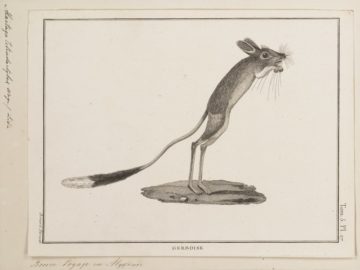 Aladdin, readers are sometimes surprised to learn, is a boy from China. Yet the text is ambivalent about what this means, and pokes gentle fun at the idea of cultural authenticity. Scheherazade has hardly begun her tale when she forgets quite where it is set. “Majesty, in the capital of one of China’s vast and wealthy kingdoms, whose name escapes me at present, there lived a tailor named Mustafa.” The story’s institutions are Ottoman, the customs half-invented, the palace redolent of Versailles. It is a mishmash and knows it.
Aladdin, readers are sometimes surprised to learn, is a boy from China. Yet the text is ambivalent about what this means, and pokes gentle fun at the idea of cultural authenticity. Scheherazade has hardly begun her tale when she forgets quite where it is set. “Majesty, in the capital of one of China’s vast and wealthy kingdoms, whose name escapes me at present, there lived a tailor named Mustafa.” The story’s institutions are Ottoman, the customs half-invented, the palace redolent of Versailles. It is a mishmash and knows it. When the first volume of “In Search of Lost Time” appeared, a year before the Great War, the shock of its excellence was captured in a delicious exchange with André Gide, the magus of the Parisian literary scene. Apologizing for having passed on “Swann’s Way” for his Nouvelle Revue Française, Gide offered an explanation almost more insulting than the original rejection: “For me you were still the man who frequented the houses of Mmes X. and Z., the man who wrote for the Figaro. I thought of you, shall I confess it, as ‘du côté de chez Verdurin’; a snob, a man of the world, and a dilettante—the worst possible thing for our review.” Proust, who had money, had offered to help subsidize the publication, which, Gide fumbles to explain, only made it seem a dubious effort at buying a reputation. (That year, Gide confided in his journal his doubts that any Jewish writer could truly master the “virtues” of the French tradition.)
When the first volume of “In Search of Lost Time” appeared, a year before the Great War, the shock of its excellence was captured in a delicious exchange with André Gide, the magus of the Parisian literary scene. Apologizing for having passed on “Swann’s Way” for his Nouvelle Revue Française, Gide offered an explanation almost more insulting than the original rejection: “For me you were still the man who frequented the houses of Mmes X. and Z., the man who wrote for the Figaro. I thought of you, shall I confess it, as ‘du côté de chez Verdurin’; a snob, a man of the world, and a dilettante—the worst possible thing for our review.” Proust, who had money, had offered to help subsidize the publication, which, Gide fumbles to explain, only made it seem a dubious effort at buying a reputation. (That year, Gide confided in his journal his doubts that any Jewish writer could truly master the “virtues” of the French tradition.) Usain Bolt won the men’s 100 metre final in the 2016 Olympic Games in 9.81 seconds and 42 strides. A few days later, Eliud Kipchoge ran 42 kilometres in 2 hours and 8 minutes to win the marathon. These extraordinary feats pose very different challenges for the human body, but the races began in much the same way. As the starting pistol fired, Bolt and Kipchoge began to use creatine phosphate, an energy-rich molecule stored in muscle tissue, to generate the energy-carrying molecule ATP. In a few seconds, however, both athletes’ stores of creatine phosphate were depleted, forcing their bodies to break down glucose to provide ATP to contracting muscle cells for a few more minutes. For Bolt and his fellow sprinters, a few minutes seems like an age. But for marathon runners, there is much farther to go. To reach the finish line, these endurance athletes rely on a slower, but more efficient way to generate ATP that uses oxygen to burn fats and carbohydrates, in structures inside the cell called mitochondria.
Usain Bolt won the men’s 100 metre final in the 2016 Olympic Games in 9.81 seconds and 42 strides. A few days later, Eliud Kipchoge ran 42 kilometres in 2 hours and 8 minutes to win the marathon. These extraordinary feats pose very different challenges for the human body, but the races began in much the same way. As the starting pistol fired, Bolt and Kipchoge began to use creatine phosphate, an energy-rich molecule stored in muscle tissue, to generate the energy-carrying molecule ATP. In a few seconds, however, both athletes’ stores of creatine phosphate were depleted, forcing their bodies to break down glucose to provide ATP to contracting muscle cells for a few more minutes. For Bolt and his fellow sprinters, a few minutes seems like an age. But for marathon runners, there is much farther to go. To reach the finish line, these endurance athletes rely on a slower, but more efficient way to generate ATP that uses oxygen to burn fats and carbohydrates, in structures inside the cell called mitochondria.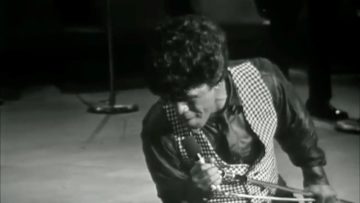 Early in 2016, not long after the inauguration of Donald Trump as President of the United States, an artist named Arthur Jafa screened a work of video art at Gavin Brown’s Enterprise in New York City. The video was titled Love is the message, the message is death. It is about seven minutes long. It is constructed of found footage ranging in time from the immediate present to shaky clips from the early days of film. Most of the clips are just a couple of seconds long. Generally, they feature Black people, African Americans in specific. Much of the footage is upsetting. That’s to say, there are clips of police brutality against Black people. These clips are interspersed with other images not obviously related to the specific issue of police mistreatment of African Americans. The entire video is set to the music of Kanye West’s gospel-ish song Ultralight Beam.
Early in 2016, not long after the inauguration of Donald Trump as President of the United States, an artist named Arthur Jafa screened a work of video art at Gavin Brown’s Enterprise in New York City. The video was titled Love is the message, the message is death. It is about seven minutes long. It is constructed of found footage ranging in time from the immediate present to shaky clips from the early days of film. Most of the clips are just a couple of seconds long. Generally, they feature Black people, African Americans in specific. Much of the footage is upsetting. That’s to say, there are clips of police brutality against Black people. These clips are interspersed with other images not obviously related to the specific issue of police mistreatment of African Americans. The entire video is set to the music of Kanye West’s gospel-ish song Ultralight Beam.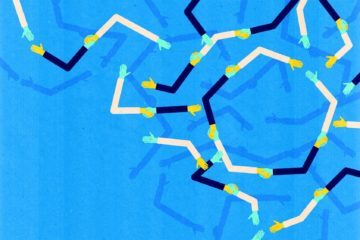 When you hit “send” on a text message, it is easy to imagine that the note will travel directly from your phone to your friend’s. In fact, it typically goes on a long journey through a cellular network or the Internet, both of which rely on centralized infrastructure that can be damaged by natural disasters or shut down by repressive governments. For fear of state surveillance or interference, tech-savvy protesters in Hong Kong avoided the Internet by using software such as FireChat and Bridgefy to send messages directly between nearby phones.
When you hit “send” on a text message, it is easy to imagine that the note will travel directly from your phone to your friend’s. In fact, it typically goes on a long journey through a cellular network or the Internet, both of which rely on centralized infrastructure that can be damaged by natural disasters or shut down by repressive governments. For fear of state surveillance or interference, tech-savvy protesters in Hong Kong avoided the Internet by using software such as FireChat and Bridgefy to send messages directly between nearby phones. The past week’s demonstrations in Colombia have shown that popular dissatisfaction is surging after a year of COVID-19 lockdowns. Although the government’s tax reform proposal may have been the immediate trigger for the unrest, pent-up anger has been building since 2019 over social inequality, unemployment, the murder of social leaders, and the conspicuous absence of the state in peripheral regions far from Bogotá. All of these problems have only been aggravated by the pandemic.
The past week’s demonstrations in Colombia have shown that popular dissatisfaction is surging after a year of COVID-19 lockdowns. Although the government’s tax reform proposal may have been the immediate trigger for the unrest, pent-up anger has been building since 2019 over social inequality, unemployment, the murder of social leaders, and the conspicuous absence of the state in peripheral regions far from Bogotá. All of these problems have only been aggravated by the pandemic. The term “churails” is Pakistan’s c-word, translated literally as “witches,” but more accurately understood as a loaded epithet for a demonic, unstable, uncontrollable species of woman, the so-called bitch/witch. Filmmaker Asim Abbasi’s über-stylish series embraces the insult, celebrating the difficult women of Pakistan and reveling in their power through ten hours of exceptional television. The four central women of Churails (Asim Abbasi, 2020–) are drawn from across social classes and life experiences but come together with a mission: to form a detective agency that hunts down the terrible men of Karachi. They work under cover, literally, as their front is a clothing business called Halal Designs, where they meet in a subterranean control room that looks straight out of The Avengers to plot their missions. In a kind of extrajudicial feminist fantasy, they traverse the streets of Karachi in burkas, opening up basements and hidden corners of Pakistani homes in the dark of night, uncovering prostitution rings, secrets, and misogynistic murderers.
The term “churails” is Pakistan’s c-word, translated literally as “witches,” but more accurately understood as a loaded epithet for a demonic, unstable, uncontrollable species of woman, the so-called bitch/witch. Filmmaker Asim Abbasi’s über-stylish series embraces the insult, celebrating the difficult women of Pakistan and reveling in their power through ten hours of exceptional television. The four central women of Churails (Asim Abbasi, 2020–) are drawn from across social classes and life experiences but come together with a mission: to form a detective agency that hunts down the terrible men of Karachi. They work under cover, literally, as their front is a clothing business called Halal Designs, where they meet in a subterranean control room that looks straight out of The Avengers to plot their missions. In a kind of extrajudicial feminist fantasy, they traverse the streets of Karachi in burkas, opening up basements and hidden corners of Pakistani homes in the dark of night, uncovering prostitution rings, secrets, and misogynistic murderers. Remember the way we brought back provisions to make our poor feasts in all the places where we pitched our tent like nomads? Remember the good taste of bread when we got it by a miracle and ate it together? And our last winter in Voronezh. Our happy poverty, and the poetry you wrote. I remember the time we were coming back once from the baths, when we bought some eggs or sausage, and a cart went by loaded with hay. It was still cold and I was freezing in my short jacket (but nothing like what we must suffer now: I know how cold you are). That day comes back to me now. I understand so clearly, and ache from the pain of it, that those winter days with all their troubles were the greatest and last happiness to be granted us in life.
Remember the way we brought back provisions to make our poor feasts in all the places where we pitched our tent like nomads? Remember the good taste of bread when we got it by a miracle and ate it together? And our last winter in Voronezh. Our happy poverty, and the poetry you wrote. I remember the time we were coming back once from the baths, when we bought some eggs or sausage, and a cart went by loaded with hay. It was still cold and I was freezing in my short jacket (but nothing like what we must suffer now: I know how cold you are). That day comes back to me now. I understand so clearly, and ache from the pain of it, that those winter days with all their troubles were the greatest and last happiness to be granted us in life. In the view of many scientists, Artificial Intelligence (AI) isn’t living up to the hype of its proponents. We don’t yet have safe driverless cars—and we’re not likely to in the near future. Nor are robots about to take on all our domestic drudgery so that we can devote more time to leisure. On the brighter side, robots are also not about to take over the world and turn humans into slaves the way they do in the movies.
In the view of many scientists, Artificial Intelligence (AI) isn’t living up to the hype of its proponents. We don’t yet have safe driverless cars—and we’re not likely to in the near future. Nor are robots about to take on all our domestic drudgery so that we can devote more time to leisure. On the brighter side, robots are also not about to take over the world and turn humans into slaves the way they do in the movies.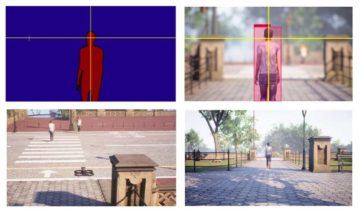 Emerging technologies such as artificial intelligence (AI) algorithms, mobile robots and unmanned aerial vehicles (UAVs) could enhance practices in a variety of fields, including cinematography. In recent years, many cinematographers and entertainment companies specifically began exploring the use of UAVs to capture high-quality aerial video footage (i.e., videos of specific locations taken from above). Researchers at University of Zaragoza and Stanford University recently created CineMPC, a computational tool that can be used for autonomously controlling a drone’s on-board video cameras. This technique, introduced in a paper pre-published on arXiv, could significantly enhance current cinematography practices based on the use of UAVs.
Emerging technologies such as artificial intelligence (AI) algorithms, mobile robots and unmanned aerial vehicles (UAVs) could enhance practices in a variety of fields, including cinematography. In recent years, many cinematographers and entertainment companies specifically began exploring the use of UAVs to capture high-quality aerial video footage (i.e., videos of specific locations taken from above). Researchers at University of Zaragoza and Stanford University recently created CineMPC, a computational tool that can be used for autonomously controlling a drone’s on-board video cameras. This technique, introduced in a paper pre-published on arXiv, could significantly enhance current cinematography practices based on the use of UAVs.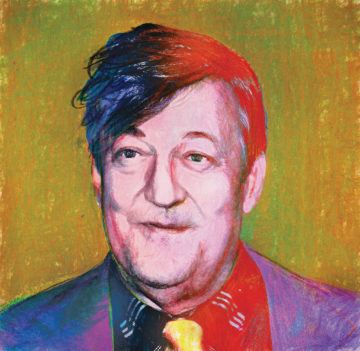 Stephen Fry: I do. I loved him. He was adorable company, but I was also quite scared of him. He was a much tougher figure than I. He didn’t mind being disliked. He didn’t mind being howled down even. He seemed to enjoy it. I can quite imagine Hitchens being on the same platform with a Ben Shapiro perhaps. But I can’t imagine him having come out on the side of Trump. Hitchens just had a style that suited America despite his Britishness. It was the swagger. I miss that the culture doesn’t have enough of these sorts of people. Toward the last year of his life, I would visit another one of them, Gore Vidal, in Los Angeles, where he had his house; it was so overgrown in the garden that it was dark inside. He would retell stories of his great rows with Norman Mailer and Susan Sontag and William Buckley. Their arguments could be mordant and full of venom, but they weren’t as unhappy as so many debates now. There was a kind of joy and pleasure in the fight.
Stephen Fry: I do. I loved him. He was adorable company, but I was also quite scared of him. He was a much tougher figure than I. He didn’t mind being disliked. He didn’t mind being howled down even. He seemed to enjoy it. I can quite imagine Hitchens being on the same platform with a Ben Shapiro perhaps. But I can’t imagine him having come out on the side of Trump. Hitchens just had a style that suited America despite his Britishness. It was the swagger. I miss that the culture doesn’t have enough of these sorts of people. Toward the last year of his life, I would visit another one of them, Gore Vidal, in Los Angeles, where he had his house; it was so overgrown in the garden that it was dark inside. He would retell stories of his great rows with Norman Mailer and Susan Sontag and William Buckley. Their arguments could be mordant and full of venom, but they weren’t as unhappy as so many debates now. There was a kind of joy and pleasure in the fight.